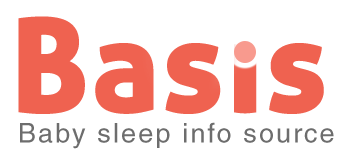Co-sleeping nests and pods
Co-sleeping nests and pods
Some brands of nests and pods are marketed for use in the parental bed, with the intention that they will keep babies securely in one place and, by the use of padded sides, prevent parents from overlying the baby. While there is merit in the idea of providing the baby with a safe space within the parents’ bed (as per the New Zealand Pepi-Pod and Wahakura programmes), pods and nests designed for bed-sharing can be problematic.
One key component of safer sleep guidance is to keep the baby’s sleep space clear and flat; clear from pillows, cushions, bumpers, soft toys etc, and flat rather than inclined, saggy, or squishy. Soft and squishy items in the sleep space create two hazards for babies:
- they can block a baby’s nose and mouth and make breathing difficult or impossible
- they can insulate a baby’s head and prevent them from loosing heat leading to overheating
The physiological stresses of overheating via head covering or struggling to breathe via airway covering are both associated with SIDS, while airway covering can also lead to suffocation.
Placing babies to sleep in pods/nests that surround them with a squishy cushion-like barrier made of insulating material therefore contradicts these aspects of safer sleep guidance. This is why SIDS charities and many health professionals advise against the use of these products. It is also why Pepi-pods and Wakahura have rigid sides with no padding.
In our research we have found pods and nests are very popular with parents who feel their baby sleeps well (longer, or more deeply) when place in one of these products, and parents often place pods/nests inside their baby’s cot to make it feel more comfortable and cosy.
But it is important to remember that prolonged and deep sleep in early infancy is also associated with an increased chance of SIDS — when babies sleep deeply they fail to arouse to face covering and other physiological challenges. In early infancy it is normal for babies to spend most of their sleep time in the lighter phases of sleep, and to arouse frequently.
If you have bought or been given a baby nest or pod it is safest to only use it when your baby is awake, and to ensure they sleep on a flat clear surface away from any pillows, soft toys etc.
If you are unwilling/unable to place your baby on a safer surface for sleep, then avoid leaving your baby alone while asleep in the nest/pod. Be sure they are in the same room as a carer who is watching them and checking on their safety.
Avoid leaving a baby unattended in a nest or pod, particularly for overnight sleep. Using a pod/nest while bed-sharing / cosleeping is not necessary and can introduce an additional hazard to the sleep environment. If you are planning to bed-share (or even if you aren’t, as bed-sharing can happen by accident) baby-proof your bed to give your baby a clear flat surface to sleep on next to you. See this information from Lullaby Trust on preparing your bed for safer bed-sharing.
